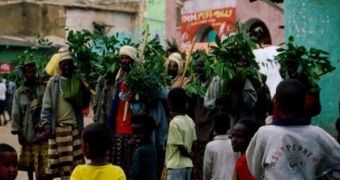The ritual of rain-making has been with humans since our race first began harvesting plants for consumption. Since the very survival of the individuals depended entirely on the crops, the need for such a ritual came with the territory, anthropologists say. It was the shaman's job to learn the right words, and to bring the rain every time it was needed. This was very useful to the tribe, and, if the rain was to be late, at least they had someone's head to account for it.
Certainly, the fact that centuries later archaeologists would use the charred remains of their offerings for the rain gods to determine periods of excessive drought on Earth never crossed their minds. Nevertheless, that's exactly what's happening nowadays, with experts happily carbon-dating just about every ash remains they can get their hands on, in an attempt to recreate a precipitation map of ancient times. The main goal is to detect droughts that took place in Iron Age Africa with an accuracy of no more than 20 years, which would indeed be a real accomplishment. Experts say that the Bantu people, indigenous to the continent, used to send shamans to mountains whenever the rain would stop for more than one year, so as to light dark smoke fires. Legend has it that these signals attracted clouds from the mountains, which then sprinkled their water on cultures and crops, allowing people to live for a couple of years more. The discovery of a large deposit of remains on the territory of the Bantu people, detailed in a recent issue of the Journal of Archaeological Science, was like a gold mine for historians trying to find out what previously-unknown droughts affected this population, and maybe even altered history. In ancient times, rain dances were performed to ensure that the crops had sufficient water until harvesting came. During that time, the crops were to be under the protection of the gods, so people would not fear pests and other such nuisances. The Bantu tribe was forced by its leaders to burn entire grain bins in the past, if rain failed to show up. The leaders used to call the seeds “unlucky,” and say that they were the ones that brought bad luck.
Old charred remains are now carbon-dated
hot right now

 14 DAY TRIAL //
14 DAY TRIAL //